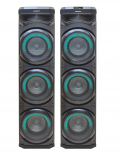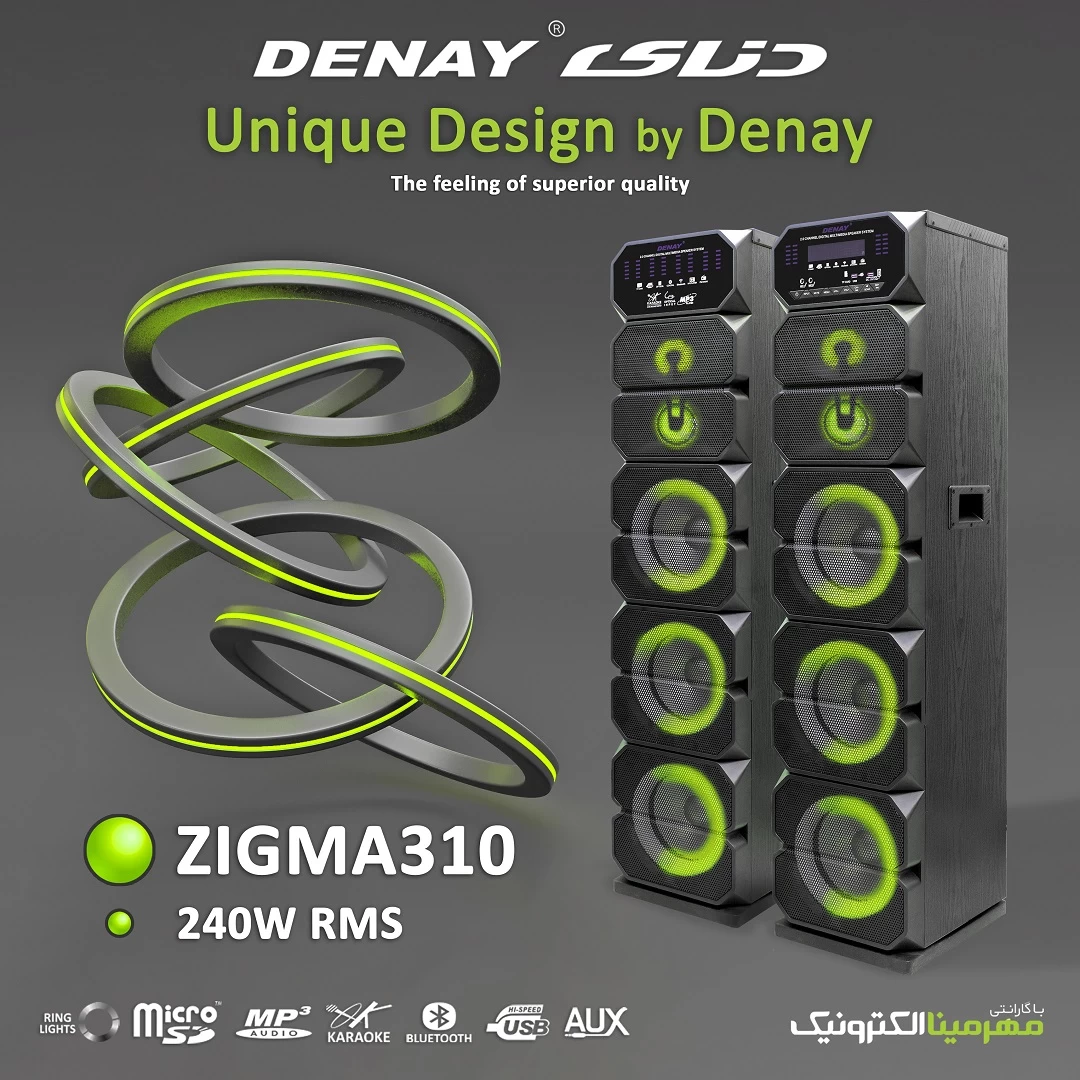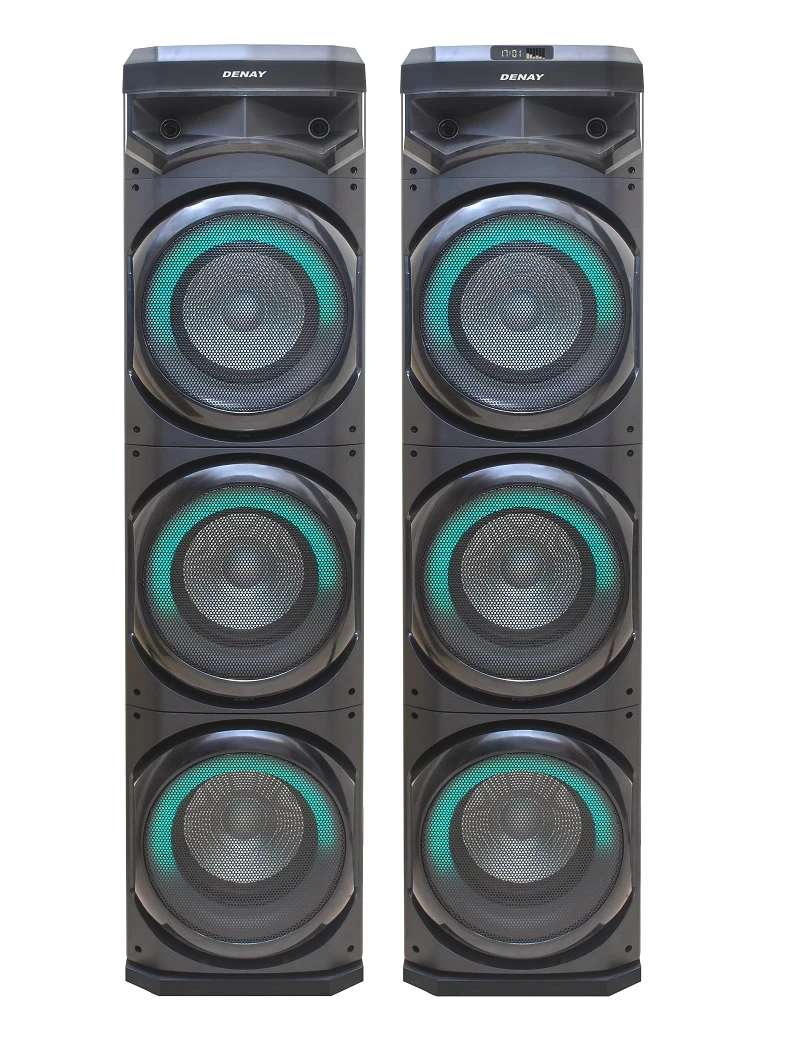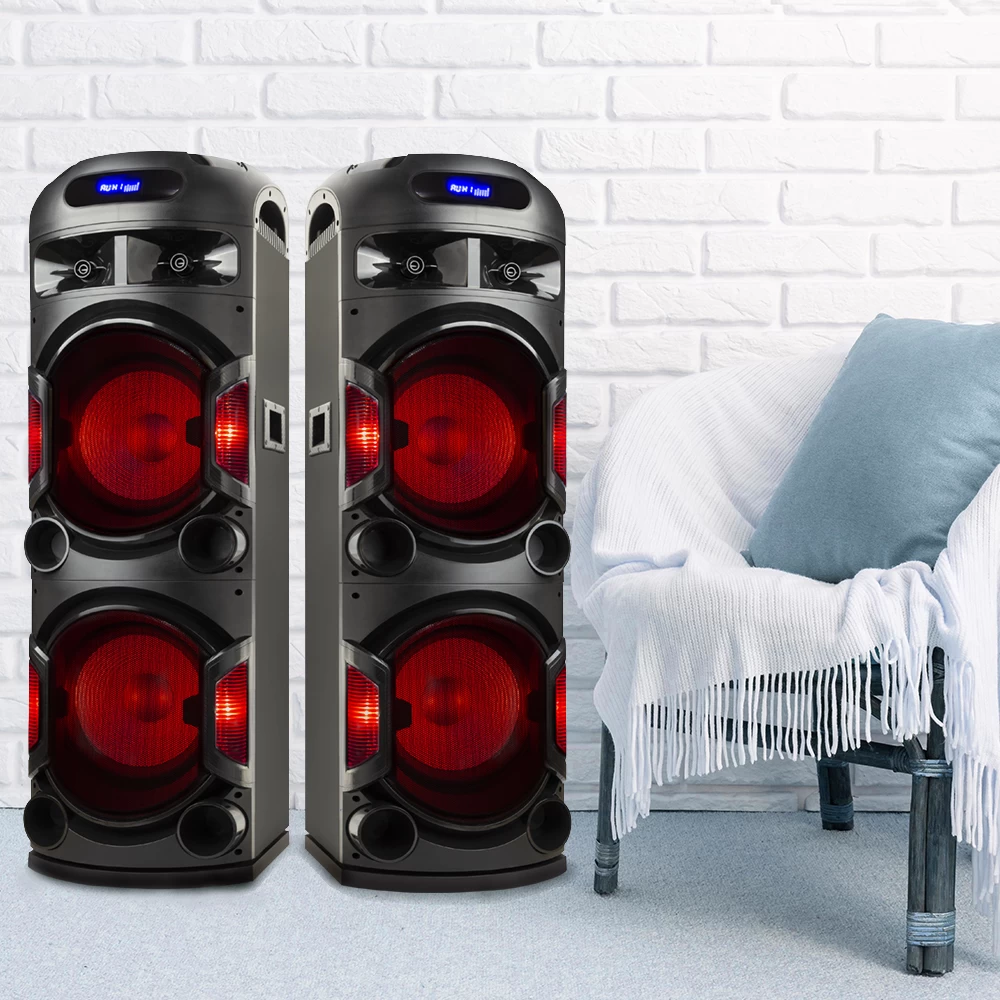Speakers & Accessories
Speakers and accessories are essential components of audio systems, enhancing sound quality and user experience.
Here's an overview:
1. Speakers: Speakers are transducers that convert electrical signals into sound waves. They come in various types, including:
- Bookshelf Speakers: Compact speakers suitable for small to medium-sized rooms.
- Floor-standing Speakers: Larger speakers designed for bigger rooms, offering powerful sound and deep bass.
- Portable Speakers: Compact and wireless speakers ideal for on-the-go use, outdoor activities, and travel.
- Soundbars: Slim, elongated speakers designed to improve TV audio, providing immersive sound for movies and music.
2. Accessories:
- Speaker Stands: Elevate speakers to optimal listening height and reduce vibrations for clearer sound.
- Speaker Mounts: Wall or ceiling mounts for securing speakers in desired locations.
- Speaker Cables: High-quality cables for connecting speakers to audio sources.
- Speaker Grilles: Protective covers for speakers, available in different colors and designs.
- Speaker Brackets: Adjustable brackets for mounting speakers on walls or ceilings.
- Speaker Spikes: Accessories to enhance stability and reduce resonance for floor-standing speakers.
- Speaker Bags/Cases: Protective cases for transporting portable speakers safely.
3. Wireless Connectivity: Many speakers now feature wireless connectivity options such as Bluetooth, Wi-Fi, or NFC, allowing users to stream audio from smartphones, tablets, and computers wirelessly.
4. Smart Features: Some speakers come with smart features like voice control (e.g., Amazon Alexa, Google Assistant), allowing users to control music playback, adjust volume, and access other smart home functions with voice commands.
5. Multi-room Audio Systems: Advanced speakers support multi-room audio setups, enabling users to synchronize music playback across multiple speakers in different rooms for a seamless listening experience.
6. High-Resolution Audio: Premium speakers and accessories are designed to reproduce high-resolution audio formats, delivering exceptional clarity and fidelity for audiophiles and enthusiasts.
Overall, speakers and accessories cater to a wide range of audio needs, from casual listening to professional audio setups, offering versatility, convenience, and enhanced audio performance.
Trading rules and exporting regulations for speakers and accessories vary depending on the countries involved and the specific types of products being traded.

Here are some general considerations:
1. Export Controls: Exporting speakers and accessories may be subject to export controls imposed by the exporting country. These controls aim to regulate the export of certain goods to prevent them from being used for illegal purposes or falling into the wrong hands. Export controls may include restrictions on specific products, destinations, end-users, or end-uses.
2. Customs Regulations: Exporters must comply with customs regulations of both the exporting and importing countries. This includes proper documentation, such as commercial invoices, packing lists, and certificates of origin, as well as adherence to tariff classifications and valuation requirements. Failure to comply with customs regulations can result in delays, fines, or seizure of goods.
3. Product Compliance: Speakers and accessories may be subject to technical regulations, standards, and certifications in both the exporting and importing countries. Exporters must ensure that their products meet applicable safety, performance, and quality standards to gain market access and avoid rejection or recall of goods.
4. Trade Agreements: Exporters can benefit from preferential trade agreements between their country and the importing country, which may reduce or eliminate tariffs and other trade barriers. Understanding the rules of origin and preferential tariff treatment under trade agreements can help exporters maximize cost savings and competitiveness.
5. Intellectual Property Rights (IPR): Exporters must respect intellectual property rights, including patents, trademarks, and copyrights, when trading speakers and accessories. This involves ensuring that products do not infringe on the intellectual property of others and taking measures to protect their own intellectual property in foreign markets.
6. Export Licensing: Certain speakers and accessories may require export licenses or permits from the exporting country's government, particularly if they are considered sensitive or controlled goods. Exporters should check whether their products are subject to export licensing requirements and obtain necessary approvals before shipping.
7. Sanctions and Embargoes: Exporters must comply with international sanctions and embargoes imposed by their own country or the United Nations Security Council. Trading speakers and accessories with countries or entities subject to sanctions may be prohibited or restricted, and exporters must ensure compliance with relevant sanctions regimes.
8. Documentation and Record-keeping: Exporters should maintain accurate records of their export transactions, including contracts, shipping documents, and correspondence with customers and suppliers. Proper documentation and record-keeping facilitate compliance with export regulations and serve as evidence of legal compliance in case of audits or disputes.
Overall, exporters of speakers and accessories must navigate a complex regulatory landscape to ensure legal and smooth international trade operations. Seeking guidance from trade experts, legal advisors, or government authorities can help exporters understand and comply with applicable rules and regulations.
Speakers and accessories are typically considered home appliances rather than furniture. Home appliances are functional devices or machines used for household tasks or activities, such as cooking, cleaning, heating, cooling, or entertainment. Speakers fall under the category of entertainment appliances, as they are used to produce sound for listening to music, watching movies, or other audio-related activities.

Furniture, on the other hand, refers to movable objects intended to support various human activities, such as sitting (e.g., chairs, sofas), sleeping (e.g., beds), or storage (e.g., cabinets, shelves). While speakers and accessories may be placed on or integrated into furniture pieces, such as entertainment centers or speaker stands, they are not considered furniture themselves.
In summary, speakers and accessories are categorized as home appliances due to their primary function of providing audio entertainment, rather than as furniture items designed for seating, sleeping, or storage purposes.
- Bookshelf Speakers: Compact speakers suitable for small to medium-sized rooms.
- Floor-standing Speakers: Larger speakers designed for bigger rooms, offering powerful sound and deep bass.
- Portable Speakers: Compact and wireless speakers ideal for on-the-go use, outdoor activities, and travel.
- Soundbars: Slim, elongated speakers designed to improve TV audio, providing immersive sound for movies and music.
- Speaker Stands: Elevate speakers to optimal listening height and reduce vibrations for clearer sound.
- Speaker Mounts: Wall or ceiling mounts for securing speakers in desired locations.
- Speaker Cables: High-quality cables for connecting speakers to audio sources.
- Speaker Grilles: Protective covers for speakers, available in different colors and designs.
- Speaker Brackets: Adjustable brackets for mounting speakers on walls or ceilings.
- Speaker Spikes: Accessories to enhance stability and reduce resonance for floor-standing speakers.
- Speaker Bags/Cases: Protective cases for transporting portable speakers safely.


FAQs
What are the key factors to consider when choosing speakers and accessories for your audio setup?
Key factors include sound quality, compatibility with audio sources, connectivity options, size and form factor, and budget.
How do portable speakers differ from traditional wired speakers in terms of functionality and usability?
Portable speakers are wireless and compact, allowing for on-the-go use, while traditional wired speakers require a physical connection to an audio source and are typically larger for stationary use.
What types of accessories are essential for optimizing the performance and placement of speakers in a home entertainment system?
Essential accessories include speaker stands, mounts, cables, and acoustic treatment materials.
How do advancements in smart technology impact the features and capabilities of modern speakers and accessories?
Advancements in smart technology enable features such as voice control, wireless connectivity, and integration with smart home systems, enhancing convenience and versatility in modern speakers and accessories.
 +7929688-88-14
+7929688-88-14

 English
English
 Persian
Persian
 Russian
Russian
 Chinese
Chinese


 +7929688-88-14
+7929688-88-14

.webp)


.webp)

